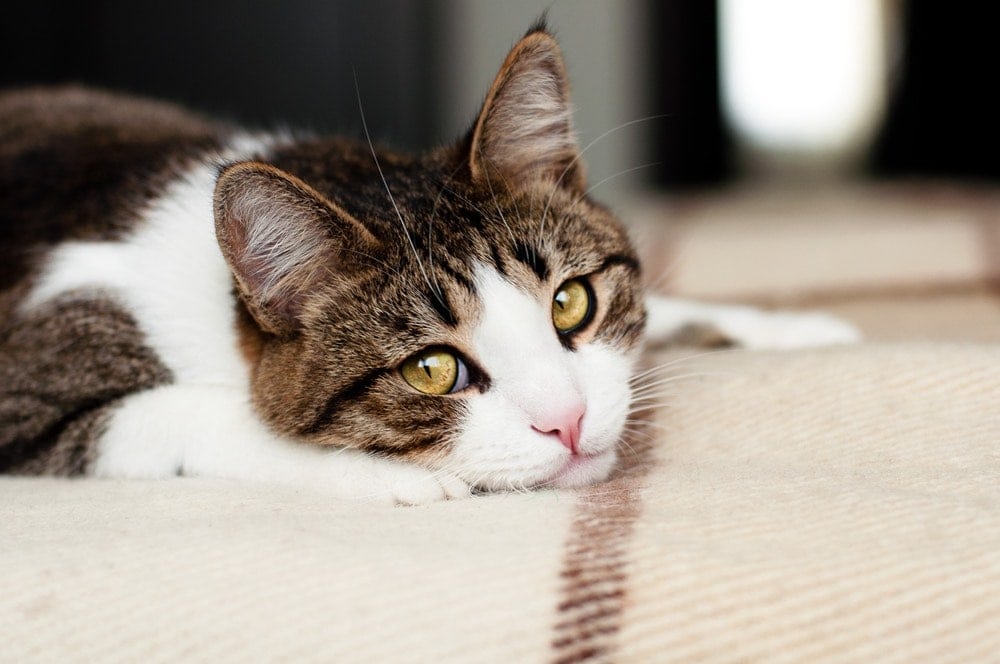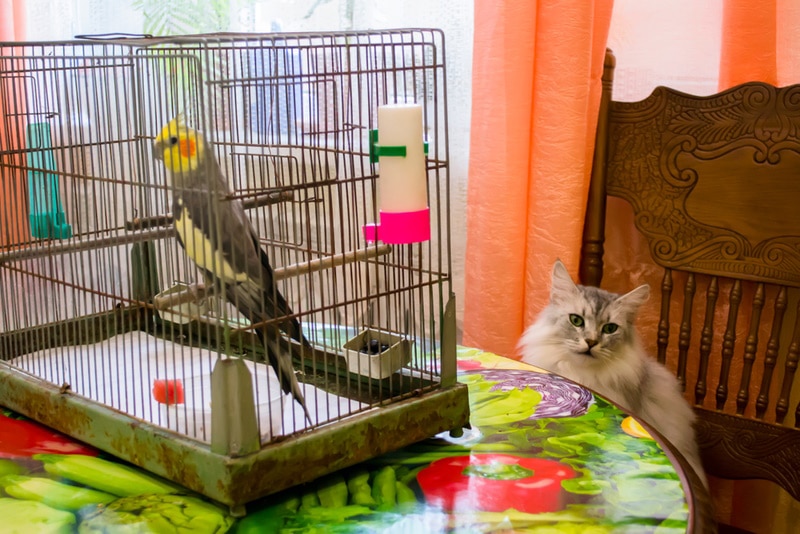What to Do After a Dog Has a Seizure – 5 Crucial Steps (Vet Answer)

Updated on
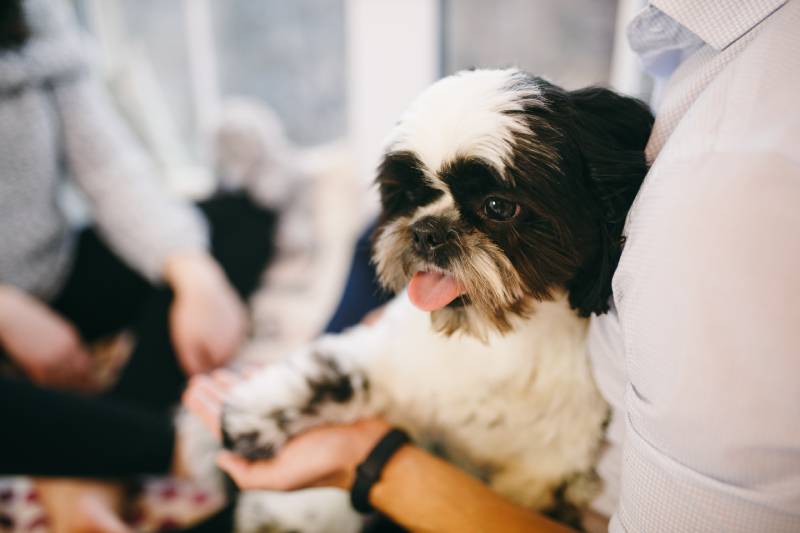
Seizures are short episodes of involuntary movements that can involve one part of the body (partial) or the whole body (generalized seizure). When seizures are generalized, they are accompanied by loss of consciousness and control of bowel or bladder function.
To describe repeated episodes of seizures, the term epilepsy is usually used. Epileptic seizures may be single or occur in clusters (two or more seizures in 24 hours). They may also be infrequent and unpredictable or predictable (occurring at regular intervals). When your dog has a single seizure episode, it may be because they ingested a chemical substance, toxic plant, or toxin. Also, seizures can occur with certain systemic diseases, such as diabetes, kidney diseases, or liver diseases.
What Do I Do After My Dog Has a Seizure?
If your dog has had a seizure, first, remain calm. The period after the seizure is called the postictal period and can last from minutes to hours. Typically, after a seizure, dogs are tired and disoriented and exhibit strange behaviors, like:
- They pace or appear restless.
- They stumble.
- They drink water excessively.
- In rare cases, dogs can suffer from temporary blindness.
After the seizure has passed, here are the things that you can do to help your dog.
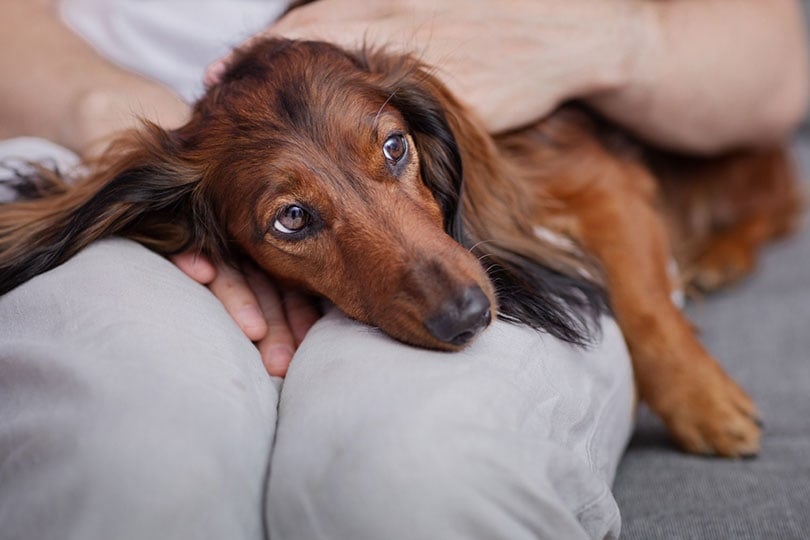
1. Protect Your Dog
After a seizure, your dog will not be stable when standing and may stumble and fall easily. To make sure your dog doesn’t hurt themselves, here is what you can do:
- Block access to areas with water (pools or ponds).
- Do not let your dog go down or up the stairs.
- Keep them in a room that does not have much furniture with sharp corners.
- Do not put them on the bed or in high places where they can fall.
2. Offer Them Support
Your dog may sit still or be anxious after a seizure because they do not know what just happened to them.
- If your dog is still, speak to them in a warm voice, and pet them gently. Do not scream at them, and do not try to make them stand up.
- If your dog is anxious, don’t try to hold them by force; you can stress or scare them even more. Do not shout at them; speak to them in a soft tone. Make sure they don’t hit the surrounding objects or walls.
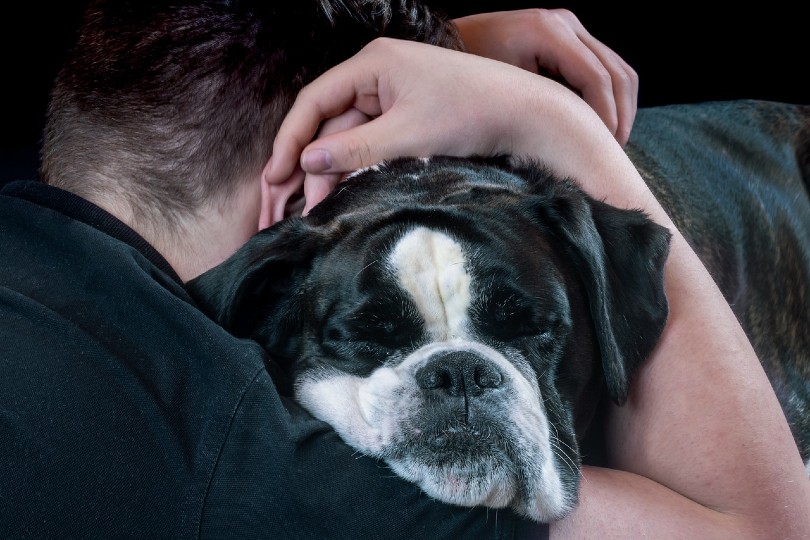
3. Monitor Their Behavior
- Do not take your dog outside right after a seizure.
- Give them a few hours to recover.
- After taking them outside, monitor their behavior for vomiting, stumbling, lethargy, diarrhea, or another seizure.
If you have a very small dog breed (toy breed) or a diabetic pet, the seizure could be due to a hypoglycemic (low blood glucose) episode. Contact your veterinarian and follow their advice. If your dog can stand on all fours by themselves, is not throwing up, and is acting normally, your vet may recommend giving them food. However, if they do not respond to stimuli or if they vomit, shake, or have more seizures, go to your veterinarian or an emergency clinic as soon as possible.
4. Keep a Seizure Journal
If it’s the first time that your dog has had a seizure and you know for sure that they haven’t eaten anything toxic or aren’t suffering from an underlying disease, start keeping a diary. Note the time and duration of each seizure. Documenting your dog’s seizures will help your veterinarian diagnose and treat your pet’s condition.
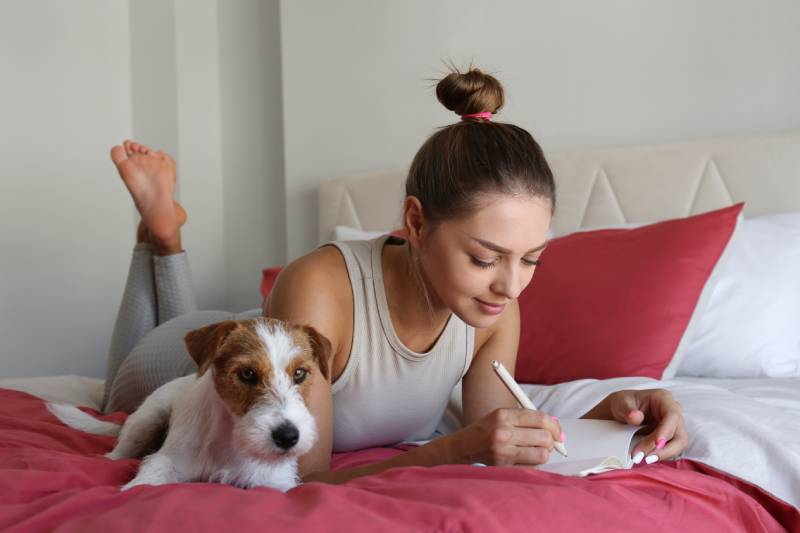
5. Take Them to the Vet
Regardless of the length or severity of the seizure, always contact your veterinarian for advice as soon as your dog’s seizure stops. Your vet may recommend that you monitor your dog at home for the next few hours or bring them in right away. They will give you clear instructions on what to do if your pet doesn’t seem well or has a new seizure. Depending on your dog’s health situation and previous medical history or if poisoning is suspected, your vet may recommend taking your dog to the clinic immediately.
What You Should Do When Your Dog Has a Seizure
- As soon as your dog has fallen to the ground, start a timer.
- It is recommended to place a pillow under their head while avoiding any physical contact.
- Make sure your dog does not hurt themselves during the seizure or fall from a height (like from the bed or sofa). Remove any sharp objects around them.
- Don’t try to take out their tongue (don’t worry, they won’t swallow it), as you risk getting bitten. It is best to monitor the situation from a distance. During a seizure, dogs are usually unconscious and cannot control themselves.
- If there are other pets in the room, take them out. They can make your dog more anxious, or your dog might become aggressive after the seizure is over.
- At the end of the seizure, your dog may appear disoriented, confused, and exhausted. After a few minutes, they may feel hungry and thirsty (polyphagia and polydipsia) or have a new seizure. You must take your dog to the vet if they have more than two seizures in a day.
- Record the seizure, if possible, as this will help the vet. It is vital to report to the veterinarian exactly what happened without neglecting any detail, especially if the seizures are frequent.
- If the seizure lasts more than 3 minutes, you may need to cool your dog with water. Use water compresses (not too cold) on the ears, abdomen, and legs, and call the vet immediately. If the seizure is longer than 5 minutes (called status epilepticus), it can put your dog’s life in danger.
Final Thoughts
Right after your dog has had a seizure, contact your veterinarian. Make sure your dog does not harm themselves, as they will be confused and disoriented. Do not put them on the bed or another high place, and ensure that they do not walk into walls and surrounding objects. Do not give them water or food until they have fully recovered. Do not try to pull out their tongue, and be careful not to get bitten. Talk to them in a friendly tone, and pet them gently. Immediately after the seizure, they may be scared or anxious, and your presence will calm them down.
Featured Image Credit: Yelizaveta Tomashevska, Shutterstock



